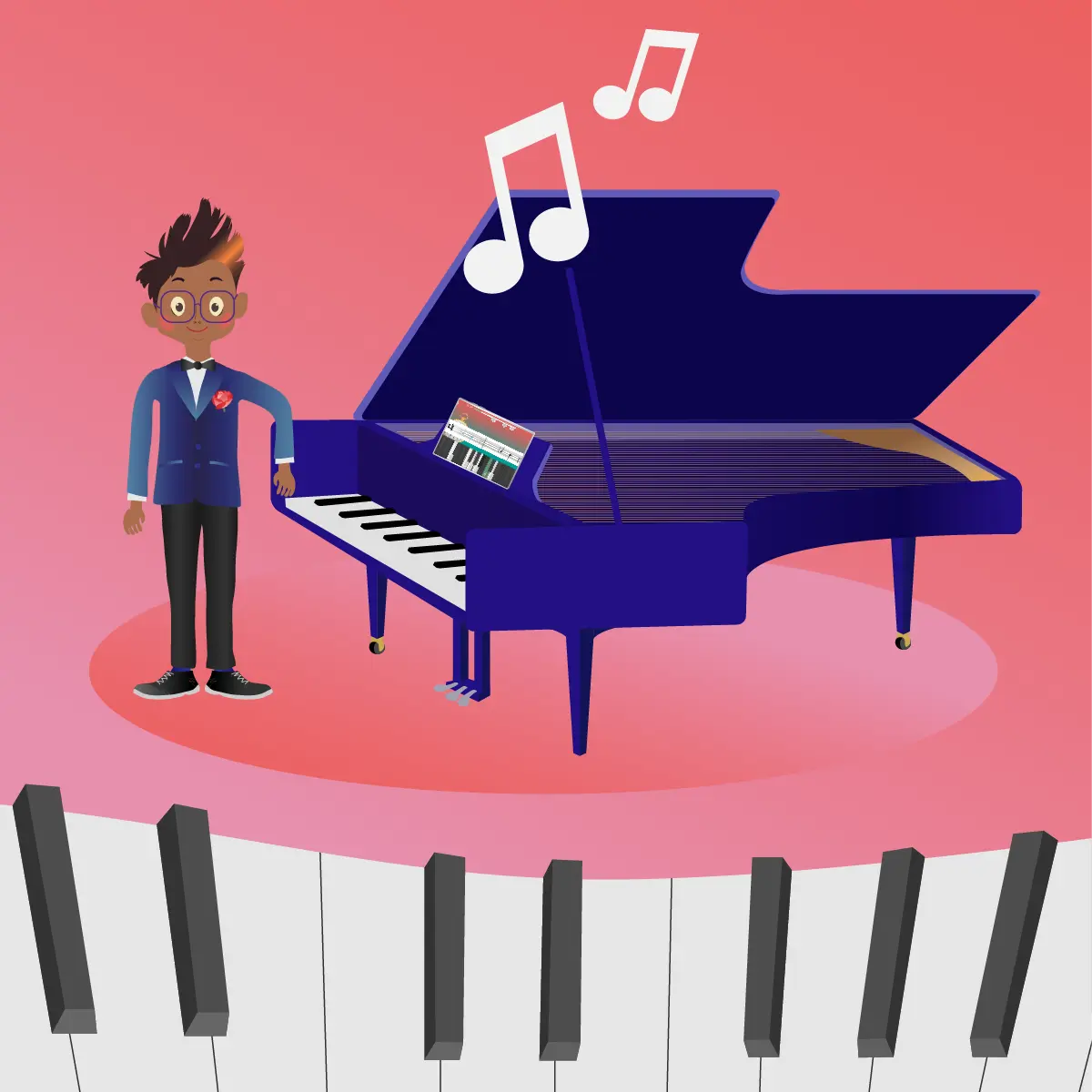By Jonathan Duffy, Arctic Meta
Most people can remember that music classes at school always seemed to be way more exciting than other classes.
For a start, the typical music lesson for most people in a public school system usually meant moving to a different room in the school that is reserved specifically for music. There are a whole lot of new things to explore, instruments, musical charts, music stands, and sometimes they even smelled different than a regular classroom.
Music can seem to be a fun, new and interesting subject to kids, but anyone who has taught music knows that sometimes that excitement and enthusiasm can simmer down considerably once it’s time to learn music theory.
Most kids are excited about the prospect of bashing around on a drum kit. They would love to become as proficient at it as a concert musician, but when they’re faced with the actual symbols and theory required to be able to understand how to play, they might quickly lose interest.
Most experts agree that enabling students to have fun while they learn will help them to engage more and retain information, but it’s not the easiest thing to do. How do you teach music theory to kids in an entertaining and engaging way? Well, read on, and you’ll find out this and more.
What is Musical Theory?

Music is fun and evokes a level of interest in most people. It is able to elicit emotional responses and even make a perfectly sane person feel an instant desire to move their body in response to what they are hearing. Music is a beautiful and somewhat mystifying thing, but it isn’t all magic; it’s possible because of a set of rules and structures that can be followed to create sounds that are pleasing to the ears.
Think of music theory like learning the rules of the road before jumping into a car to learn how to drive. It’s totally possible to learn how to drive a car without ever knowing the road rules, but most people would agree that doing this would be dangerous.
It’s possible to learn an instrument without completely learning music theory, it’s not going to be dangerous, but it will make things much harder for the student.
One of the best things to keep in mind as a parent or teacher is to try to make the learning experience as enjoyable as possible, and below are a few hints that might inject a bit of fun and magic into music theory.
Make it a Game
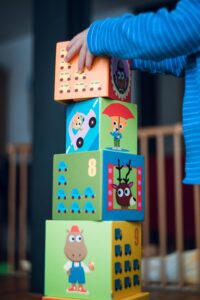
One of the greatest minds of modern history was Albert Einstein, a man who is widely regarded as one of the single-most influential minds of the twentieth century. Many have wondered if his brilliance began in childhood, and Einstein himself would often recount an anecdote about it when asked.
He would say once, when he was stuck sick in bed, his father gave him a simple compass to cure his boredom. He was never told anything about what the compass does or how it works, but he remembered that he was absolutely fascinated with it. He couldn’t figure out why or how the needle seemed to always point in the same direction. He would often tell interviewers that the curiosity he experienced with this compass was the most defining factor of his entire career.
This story is relevant because it shows just how much the innate curiosity of children is piqued when they are engaged in some sort of play. Einstein wasn’t given a compass and told, ‘here, it points North;’ he was given a compass and encouraged to play with it to figure things out for himself.
When children learn through play, they have been shown to be more open to new information and concepts. They are also more relaxed and tend to remember what they have learned at a higher rate. Any form of game that is incorporated into a music theory lesson will always help yield better pedagogical outcomes.
Test a Variety of Teaching Techniques

While children respond well to and often crave routine, they can also grow tired or bored of situations if they completely lack variety.
Mixing things up can satiate a student’s need for change while also keeping them on their toes. This can mean injecting some game elements into a theory lesson (as mentioned above), but it can also be as simple as changing the order things are done in a lesson.
Perhaps lessons normally begin with checking homework, looking at a theory point, using a practical example and then playing a game. Perhaps, where possible, changing these around will help drive up overall attention during class while leaving students with the excited feeling that they’re never sure what treats are waiting for them in their music lesson.
Use the Right Tools

Most music teachers would agree that increasing their budget would make a huge difference to the quality of their lessons, but there are small, inexpensive tools that can make a huge difference in the music classroom.
Magnetic whiteboards and small magnet boards can help to make theory tasks more interactive. Creating a musical stave on a magnet board out of black tape and attaching magnets to cardboard music notes can make music theory more practical and more fun.
Not every school has access to loads of instruments, but small, simple percussion instruments like maracas, castanets and tambourines are heaps of fun for kids. Using music players or having a subscription to a music service can also make it easier to add more actual music into music lessons.
Another tool that’s available in music classrooms is EdTech Educational Technology (EdTech for short) uses digital advancements to help assist educators in the learning journey of their students. A great example of this is Mussila Music, a complete musical education software package that’s available for both parents and teachers.
Mussila uses a ‘Learn, Play, Create’ approach to give kids a complete musical education without the need for expensive equipment or even physical instruments. Mussila for Schools allows teachers to use this digital platform as an additional resource to their curriculum while also giving them the ability to check on their students’ progress.
In an age where most kids have access to some form of computer or tablet, using something like Mussila Music could be a great way to make sure homework is fun and always done on time.
Teach the Basics
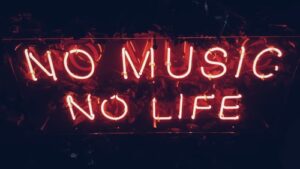
After looking at ways to make sure the content of music theory lessons is engaging and fun, it’s time to look at what specifically should be taught. The best place to start is normally with the basics.
Below is a list of some of the basic elements of music theory it’s good to cover early on so that kids have a level of understanding of what they are and how they work.
The Grand Staff
The Grand Staff is the set of lines that musical notes sit on or between. All of the lines and spaces on the grand staff represent musical notes.
The Treble Clef and Notes
The full range of notes is too large to be able to fit on just one staff, so they are split into the higher notes and the lower notes. The way to tell if the notes are higher or lower depends on what symbol is at the very start of the piece of music.
Probably the most common symbol people associate with music is that stylised letter ‘G’ which is known as a treble clef. If the music starts with this symbol, it means that the staff is a treble staff which means the notes will be higher.
The Bass Clef and Notes
If the staff begins with a symbol that looks a little like a curled up tadpole with two dots to its right, this means that the notes will be lower because it is a bass clef.
The Ledger Lines
The space above, below, and in-between staffs is still available for music notes, and this is where special, sort of invisible, lines exist that can eventually become the home for these notes. These ledger lines appear as single lines above, below or through the notes they belong to.
The Notes
As stated earlier, every line and space on the staff represents a musical pitch or note. The entire range of musical notes goes from A to G and then repeats itself in the same cycle over and over from low to high, basically until the notes are no longer perceptible by human ears.
Note Duration
The lines and spaces tell a musician what pitch a note is supposed to make, but the shape and colour of a note tells them how long the note is supposed to be played. Every note length has a specific symbol that communicates this.
Measures & Time Signature
Measures in music are smaller sections of the whole piece; they are separated by vertical black lines.
A time signature is a mathematical fraction that is displayed next to the clef in a piece of music. This fraction tells the musician information about the timing of the music. The numerator (top number) represents the number of beats in each measure of the song. The denominator (bottom number) tells the musician what the value of each beat is.
Rest Duration
There are very few songs that actually have instruments playing for one hundred per cent of their runtime. Silence actually plays a role in music, too, and in music theory, there are special symbols that show musicians how long they should stay silent when playing; these are Rest Symbols.
Dots and Ties
Notes can be manipulated by adding dots after them or attaching them to other notes. When a dot is visible after a note, it means that the note should be played for its original value, plus another half count.
When two notes are attached to each other with a horizontal line called a ‘Tie’ it means that their duration is increased for that particular.
Steps and Accidentals
Steps in music refer to the space between notes. Imagine on a piano keyboard; there are individual keys, and each plays separate notes. The space between them can be called ‘steps’, but not every key is a whole step. Sometimes the space between notes is only a half step or ‘semitone.’
Accidentals look at the ways that the pitch of a note can be slightly raised or lowered. Often accidentals are referred to as flats and sharps.
Teach Rhythm and Metre
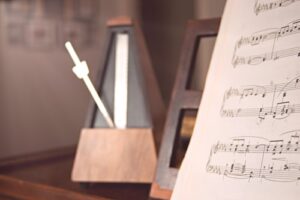
Music theory isn’t just about learning symbols and attaching them to sounds and pitch; it also involves learning about beats and rhythm. The ways in which the beats of a piece of music form patterns is known as ‘Metre’ (Meter in American English). There are different kinds of metre in music.
Simple and Compound Metre
Metres can be both simple and compound. A simple metre is where there are two notes within each beat. In a compound metre, each beat can be divided into three notes.
Odd Metre
Odd metres are where the simple and compound beats are combined together.
Teach Scales & Key Signatures
There are other pieces of information that can be placed at the start of a piece of music that will change the way it is played. Key signatures are additional symbols that occur after the clef. The key signature tells the musician which sharps or flats exist in the piece of music. It’s almost like a shorthand, which means the composer doesn’t need to add the sharps and flats for every note they are attached to.
There are quite a few different variants of key signatures, and they depend on which particular scale they are set in.
Key Signatures
As explained above, the key signatures demonstrate the variations of accidentals that will
happen in the scale of the piece of music.
Major Scale
Major Scales contain notes that make up a whole octave. Going back to steps and half steps, a major scale contains two entire steps, one half-step, then another three whole steps and finally a half step.
Minor Scale
A minor scale is orientated a bit differently from a major scale. Generally, a minor scale begins with a whole step, followed by a half-step, then two whole steps, a half-step and then finishes with two whole steps.
Scale Degrees
Within scales, there are even more technical terminology words to learn. Inside a single scale, each note is called a degree. The first and last notes of every scale are called tonics. There are two other important notes in scales. The fifth note of every scale is called the ‘dominant’, and the fourth note is called the ‘subdominant.’
Key Signature Calculation
There are 30 different key signatures in music, and it’s not easy to memorise every single one of them. More advanced musicians can memorise just seven of the possible key signatures, and then they can add and subtract values to them according to the sharps and flats that occur in particular variations.
Teach Intervals
Intervals are an important part of music theory to learn. It’s essential to understand what they are as music students begin to train their ears. Both melodies and harmonies require an understanding of what intervals are.
In the most simple terms, intervals are the distance between two different tones, and this can be measured in numbers and also in the quality of how two tones could sound together.
Generic Intervals
Generic intervals represent the distance between two notes on the staff, ignoring any accidentals. Intervals can be a first, which means that they sit on the same line or space. Intervals can also be seconds, thirds, and so on, which indicates the distance between them on the staff.
Specific Intervals
When an interval is specific, it shows the intricate distances between notes, including half steps.
Writing Intervals
To write intervals, musicians first start with a generic interval and then figure out the amount of half steps that also appear. Once they have compared and added accidentals, it’s much easier to find the precise interval of a piece of music.
Interval Inversion
Intervals can also be turned around. Interval inversion happens when the lowest note is moved up an entire octave.
Teach Basic Chords
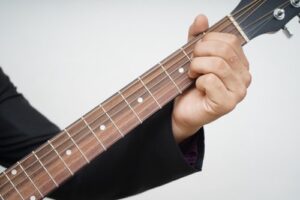
Chords are another essential part of music theory. There are a few different kinds of chords to learn.
Basic Chords
A basic musical chord is a combination of three or more individual notes played together at the same time. All basic chords have one single note as their foundation, and this note is known as the root.
Triad Inversion
Triad chord inversions are created by taking the lowest note in the chord and moving it up an entire octave, so it then becomes the highest note. If the lowest note that becomes inverted is the first note in the chord, this is known as a first inversion.
Seventh Chords
Seventh chords are a special type of chord that combines a regular triad with an interval on the seventh note.
Teach Diatonic Chords

They may have a complicated name, but diatonic chords are basically chords that come from the notes of the same musical key. Think of them as a group of chords that share a similar DNA.
Diatonic Triads
In music theory, diatonic triads are triad chords that are formed from notes that occur in both major and minor scales.
Diatonic Seventh Chords
Both the major and minor scales have seven diatonic seventh chords. When the triad is major, it is known as a major seventh; when it is minor, it is known as a minor seventh.
Teach Chord Progressions
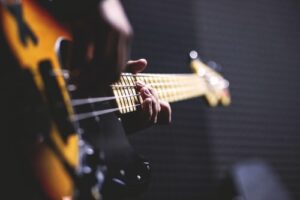
A chord progression is a basic sequence of chords that, when put together, usually form the basis of a song. There are a few different things to teach when it comes to chord progressions.
Common Chord Progressions
Common chord progressions are the ‘bread and butter of music. They form the patterns of songs that make them interesting to listen to.
Nonharmonic Tones
When it comes to a piece of music, there are notes in a song that belong to a specific chord. They are designed to be played at the same time, and they basically belong together. Sometimes notes or ‘tones’ can be added to them that don’t specifically belong to the chord; these are known as nonharmonic tones.
Phrases and Cadences
It could be said that music can sometimes be like a paragraph or a story. Sometimes there are sections of the story that sound like they are complete on their own. This is what the term ‘phrase’ refers to. It’s pretty much a grouping of chords or a chord progression that sounds fully complete if they are played separately from an entire song.
If a cadence is considered to be a musical thought, a cadence is a two-chord progression that happens at the very end of that thought.
Circle Progressions
Circle progressions are a little more complex to understand. They involve moving the root (main note) of a chord to the root of another chord. Their direction is always heading upwards to a fourth or downwards to a fifth.
Triads in First Inversion
When a composer wants to create a really smooth bass line or write a song that repeats chords, they often use triads in the first inversion because it helps to provide subtle movement.
Triads in Second Inversion
Triads in the second inversion help to smooth out changes in chord progressions and also assist with abrupt jumping between chords that aren’t similar.
Teach Neapolitan Chords
Neapolitan chords are special chords that use the theory of a major triad, but they are built around a special note.
Using Neapolitan Chords
Neapolitan chords are often used in place of first inversion chords.
Conclusion
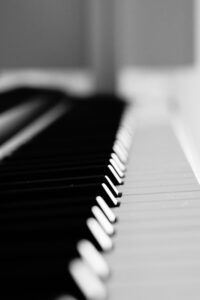
At face value, most people would probably look at music theory as an arduous task that’s only necessary for those who truly want to pursue music as a career. The reality of the situation is that music theory is the basic foundation for musical understanding, and anyone who seeks to understand or perform music should try to find a way to make music theory an interesting and informative part of their musical education.








